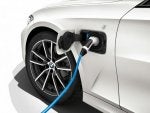I have decided that I would and could be a plugin hybrid vehicle user in the future and would be willing to pay extra to have a gas motor on board to extend the range. Asked my wife about her idea of an an ideal vehicle (she is pretty much joe public, but has now learned she likes EV's) and her idea would be a plugin hybrid EV on a RAV4 chassis with a battery range of 200-300 miles, and a gas motor as a range extender.
I think GM has given up too soon on the plugin hybrid concept, and I would challenge the designers of the Volt that today there is a simpler concept that would win the day. Get rid of the complex transaxle, and simplify the drive train to pure electric, no hydraulic clutching necessary and so forth.
Here is what I would imagine as the next step for GM in this class, I am going to call it the CrossVolt as I always liked that name,
I think GM has given up too soon on the plugin hybrid concept, and I would challenge the designers of the Volt that today there is a simpler concept that would win the day. Get rid of the complex transaxle, and simplify the drive train to pure electric, no hydraulic clutching necessary and so forth.
Here is what I would imagine as the next step for GM in this class, I am going to call it the CrossVolt as I always liked that name,
- Equinox / RAV4 chassis
- Battery pack in the floor pan like all modern electric vehicles today
- An EV battery range of 120 miles
- A gas motor range extender with a simpler pure electric power train architecture
- With a long term design goal of increasing to a 200-300 EV mile range vehicle in future versions
- With a 7.2 kw on board charger (entry level)





